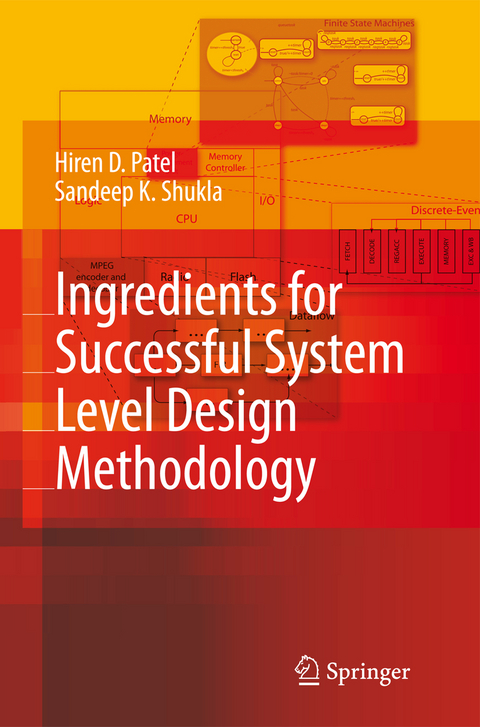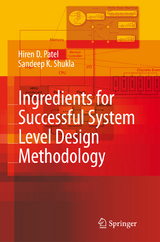Ingredients for Successful System Level Design Methodology
Seiten
2008
Springer-Verlag New York Inc.
978-1-4020-8471-3 (ISBN)
Springer-Verlag New York Inc.
978-1-4020-8471-3 (ISBN)
ESL or “Electronic System Level” is a buzz word these days, in the electronic design automation (EDA) industry, in design houses, and in the academia. Even though numerous trade magazine articles have been written, quite a few books have been published that have attempted to de?ne ESL, it is still not clear what exactly it entails. However, what seems clear to every one is that the “Register Transfer Level” (RTL) languages are not adequate any more to be the design entry point for today’s and tomorrow’s complex electronic system design. There are multiple reasons for such thoughts. First, the c- tinued progression of the miniaturization of the silicon technology has led to the ability of putting almost a billion transistors on a single chip. Second, applications are becoming more and more complex, and integrated with c- munication, control, ubiquitous and pervasive computing, and hence the need for ever faster, ever more reliable, and more robust electronic systems is pu- ing designers towards a productivity demand that is not sustainable without a fundamental change in the design methodologies. Also, the hardware and software functionalities are getting interchangeable and ability to model and design both in the same manner is gaining importance. Given this context, we assume that any methodology that allows us to model an entire electronic system from a system perspective, rather than just hardware with discrete-event or cycle based semantics is an ESL method- ogy of some kind.
Related Work.- Background.- Behavioral Hierarchy with Hierarchical FSMs (HFSMs).- Simulation Semantics for Heterogeneous Behavioral Hierarchy.- Bluespec ESL and its Co-simulation with SystemC DE.- Model-driven Validation of SystemC Designs.- Service-orientation for Dynamic Integration of Multiple Tools.- Summary Evaluations.- Conclusion and Future work.
| Zusatzinfo | XVI, 208 p. |
|---|---|
| Verlagsort | New York, NY |
| Sprache | englisch |
| Maße | 155 x 235 mm |
| Themenwelt | Mathematik / Informatik ► Informatik ► Theorie / Studium |
| Technik ► Elektrotechnik / Energietechnik | |
| ISBN-10 | 1-4020-8471-4 / 1402084714 |
| ISBN-13 | 978-1-4020-8471-3 / 9781402084713 |
| Zustand | Neuware |
| Haben Sie eine Frage zum Produkt? |
Mehr entdecken
aus dem Bereich
aus dem Bereich
Grundlagen – Anwendungen – Perspektiven
Buch | Softcover (2022)
Springer Vieweg (Verlag)
34,99 €
Eine Einführung in die Systemtheorie
Buch | Softcover (2022)
UTB (Verlag)
25,00 €




